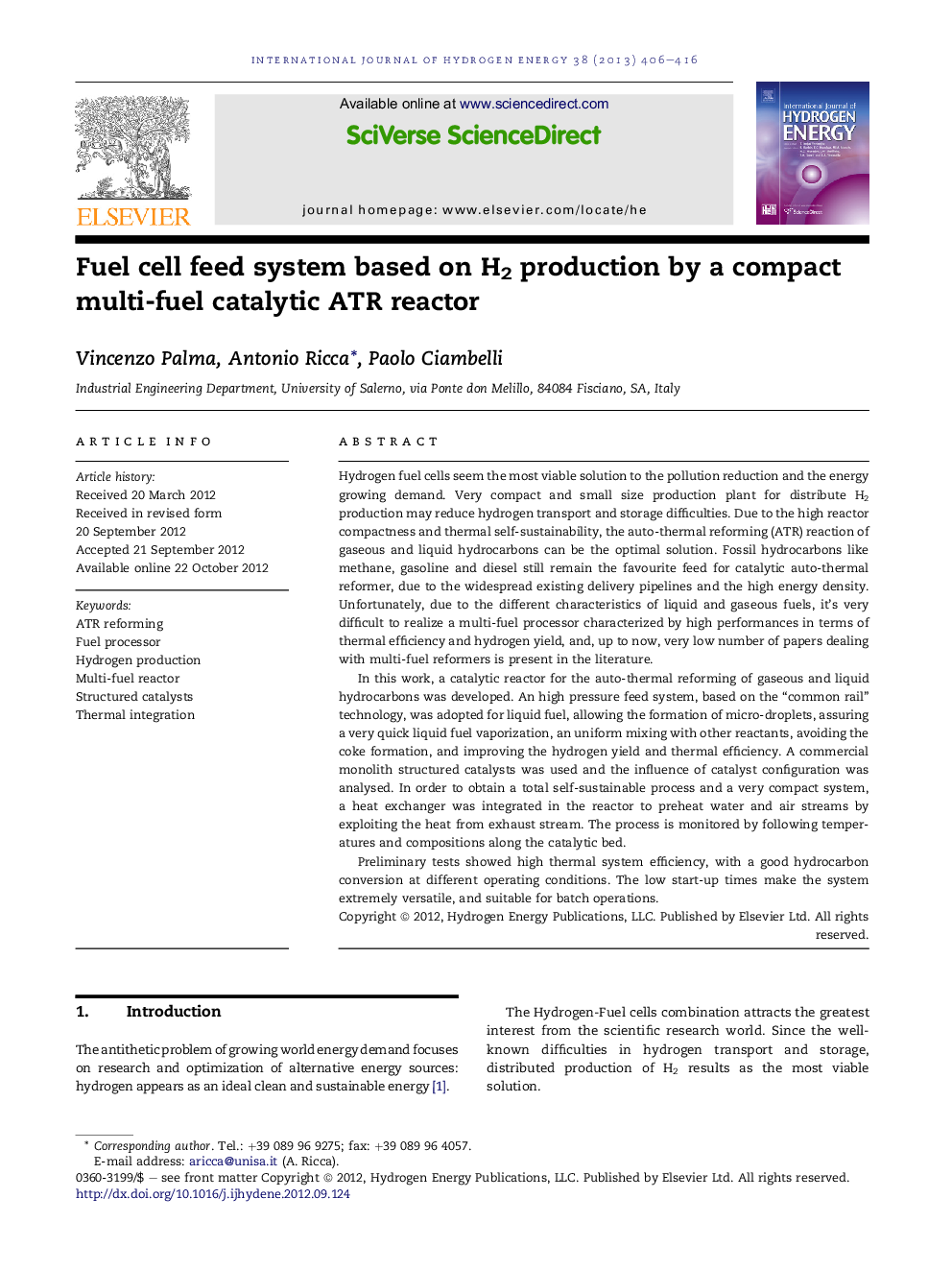| Article ID | Journal | Published Year | Pages | File Type |
|---|---|---|---|---|
| 1274388 | International Journal of Hydrogen Energy | 2013 | 11 Pages |
Hydrogen fuel cells seem the most viable solution to the pollution reduction and the energy growing demand. Very compact and small size production plant for distribute H2 production may reduce hydrogen transport and storage difficulties. Due to the high reactor compactness and thermal self-sustainability, the auto-thermal reforming (ATR) reaction of gaseous and liquid hydrocarbons can be the optimal solution. Fossil hydrocarbons like methane, gasoline and diesel still remain the favourite feed for catalytic auto-thermal reformer, due to the widespread existing delivery pipelines and the high energy density. Unfortunately, due to the different characteristics of liquid and gaseous fuels, it's very difficult to realize a multi-fuel processor characterized by high performances in terms of thermal efficiency and hydrogen yield, and, up to now, very low number of papers dealing with multi-fuel reformers is present in the literature.In this work, a catalytic reactor for the auto-thermal reforming of gaseous and liquid hydrocarbons was developed. An high pressure feed system, based on the “common rail” technology, was adopted for liquid fuel, allowing the formation of micro-droplets, assuring a very quick liquid fuel vaporization, an uniform mixing with other reactants, avoiding the coke formation, and improving the hydrogen yield and thermal efficiency. A commercial monolith structured catalysts was used and the influence of catalyst configuration was analysed. In order to obtain a total self-sustainable process and a very compact system, a heat exchanger was integrated in the reactor to preheat water and air streams by exploiting the heat from exhaust stream. The process is monitored by following temperatures and compositions along the catalytic bed.Preliminary tests showed high thermal system efficiency, with a good hydrocarbon conversion at different operating conditions. The low start-up times make the system extremely versatile, and suitable for batch operations.
► A total self-sustained ATR system was set-up: no external heat sources are needed. ► The use of a high-pressure common rail feed system for liquid fuel assures an optimal pre-mixing with other reactants. ► Temperature and composition monitoring of process stream along catalytic bed allows a very comprehensive process analysis. ► Quick start-up times and quick response to fed changes had been observed. ► The relevance of catalytic volume thermal insulation had been highlighted.
